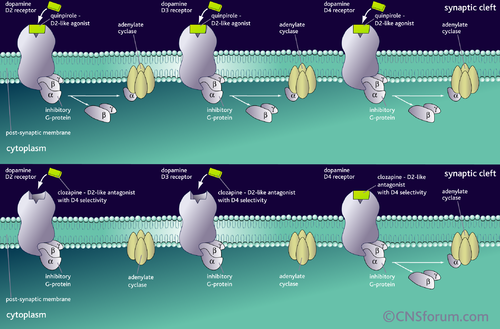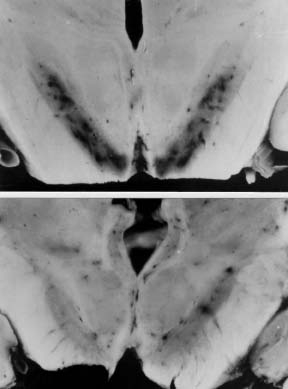Parkinson's
By Katja Shimkin
An Introduction to Parkinson's Disease
Parkinson’s Disease (PD), the second most common neurogenic disorder, is associated primarily with expressed motor dysfunctions. From bradykinesia and awkward gait, to postural instability and hypomimia, PD is conceptualized so classically as an illness affecting body movement that the abnormal psychological or neuropsychological consequences that also distinguish it, remain inconspicuous and, in several instances, vastly underreported. Major Depressive Disorder commonly presents as a comorbidity with PD, and cognitive dysfunctions, particularly in cortical areas pertaining to executive functions such as judgement and planning, are also frequent, and in need of further research. Additionally, investigation into the prevalence of acquiring impulse control-related disorders, or associated conditions such as punding, is now underway, and analyses are reporting these conditions to be common, despite the public’s lack of knowledge regarding them. Fortunately, recent scientific inquiries into these and other detrimental effects of PD have resulted in several discoveries that could set the foundations for novel treatments to increase quality of life for individuals afflicted by PD, and, with increasing treatment options will come increasing public awareness of the vast scope of issues related to this incurable, progressive, degenerative illness.
Currently, the most common generalized treatment for PD is administration of the drug levodopa (L-DOPA.) L-DOPA is a precursor molecule to DA (as well as all neurotransmitters in the catecholamine class) and is necessary for synthesis of the chemical within the presynaptic neuron. Unlike DA, L-DOPA is small enough to permeate the blood-brain barrier, and once through the membrane, the molecule is catalyzed by the enzyme Aromatic-L-amino-acid decarboxylase into DA (Showing Protein Aromatic…, 2015) where an increase in the quantity of the neurotransmitter may mitigate the hypokinesic symptoms characteristic of PD. Since the 1960’s, treatment with the L-DOPA drug has been the standard Parkinson’s treatment, however recent investigations have implicated several other treatment methods as potentially beneficial. Whereas L-DOPA remains an effective treatment, it frequently leads to development of hyperkinesic side effects such as tremors. Additionally, though rare, there are instances in which L-DOPA does not prove to be effective. For these reasons, additional or alternative preventative measures must be investigated. The remainder of this site will discuss several side effects of dopamine treatment medications, and present recent research into possible practical solutions. A recent discovery regarding a novel, preventative vaccine will also be emphasized. The goal is to highlight these potential treatment reforms, as well as to educate readers with regards to less-known clinical presentations associated with Parkinsonian treatment drugs.

A Basic Explanation of Parkinsonian Neurological Deficit
A 2008 review article sponsored by Duke University Medical School describes the pathophysiology of Parkinson’s Disease, emphasizing loss of dopaminergic neurons in two specific regions of the cerebral cortex: the ventral tegmental area (VTA), and the pars compacta. The major production-site of dopamine neurotransmitters, the VTA maintains an extensive neuronal projection circuit, supplying dopamine (DA) to nearly the entire brain, cortex and brainstem. Also described, the pars compacta is one of two structures that comprise the substantia nigra, a cortical region that supplies inhibitory GABA neurons to the striatum. The striatum, or striate cortex, is the source of excitatory dopamine neurons to the movement-regulating brain region called the basal ganglia, and is also a major contributor to the brain’s reward system (Ferrara, 2008).
As a primary binder of excitatory neuroreceptors, dopamine is highly implicated in Parkinsonian pathologies, motor as well as cognitive. In an unaffected brain, DA projections from substantia nigra to the striate are abundant. PD, however, is an illness predominantly induced by degeneration of such projections. Because the striate supplies the movement-controlling basal ganglia with DA, a diminished quantity of DA neurons projecting to the striatum effectually diminishes the amount of neurotransmitter reaching the basal ganglia. This accounts for the hypokinesic symptoms frequent in those who suffer from Parkinson’s (i.e. muscle rigidity, difficulties producing self-inspired movements, hypomimia). Additionally, dopaminergic depletion in areas, such as the basal ganglia, related to the brain’s reward system may explain the biochemical aspect of much-elevated depression rates in those diagnosed with the disease (Triarhou, 2015).
repetitive Transcranial Magnetic Stimulation (rTMS)
Antipsychotics

Include some current research, with at least one figure showing data.
Preventative Measures: a Microbial Direction
Conclusion
References
Authored for BIOL 291.00 Health Service and Biomedical Analysis, taught by Joan Slonczewski, 2016, Kenyon College.

